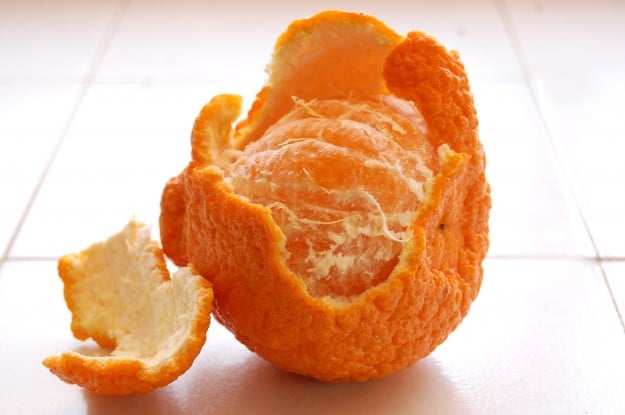Sumo oranges are what everyone is talking about these days. They are huge, bumpy, and said to be very sweet.

The following written content by Cynthia Sass, MPH, RD
Each year for the past few years, right around January, a certain orange fruit comes into the spotlight. It’s huge, has a bumpy texture with a big knot on top, and tastes sweeter than probably any other orange fruit you’ve encountered.
But it’s not just TODAY hosts who are fans—Sumos are all over social media right now, with tons of people talking up the fruit. Just in case you’re curious too (we sure were), here are the basics about this unique, nutritious treat, why you may just fall in love with Sumos too, and how to find them soon, before they’re out of season.
Where do Sumo oranges come from?
While some people refer to the fruit as Sumo oranges, that’s not actually correct, since they’re not technically oranges. Sumo Citrus® is the actual trademarked brand name for this distinct treat, made from a hybrid of Navel, Mandarin, and Pomelo citrus fruits. Originally cultivated in Japan, Sumo seedlings were imported into the US in the late 1990s, according to the fruit’s website. But because the fruit is challenging to grow, it wasn’t made available to consumers until 2011. Now, farmers in California make Sumo oranges available to US customers.

But there’s a catch: Because the growing season is long, and the fruit is carefully hand picked and hand packed, Sumos are only available between January and April. One note: because of the special growing needs and limited season, Sumo is also slightly more expensive than other common types of citrus.
What makes Sumo oranges unique?
First and foremost, the oranges are huge. One Sumo orange is bigger than a large handful, and weighs a little over eight ounces, compared to about five and half ounces per medium orange. The fruit’s size and characteristic top knot, which is reminiscent of the hairstyle worn by sumo wrestlers, is how they got their name.
The natural hybrid, which is not genetically modified, offers a few other distinctive perks. The thick, bumpy, no-mess rind is easy to peel, there is much less bitter white pith, and the fruit is seedless and incredibly sweet. The delicious flavor of Sumo citrus is in part due to its high sugar to acidity ratio, which makes it taste sweeter than many of its citrus relatives. Read more from Health.
Advertisement






